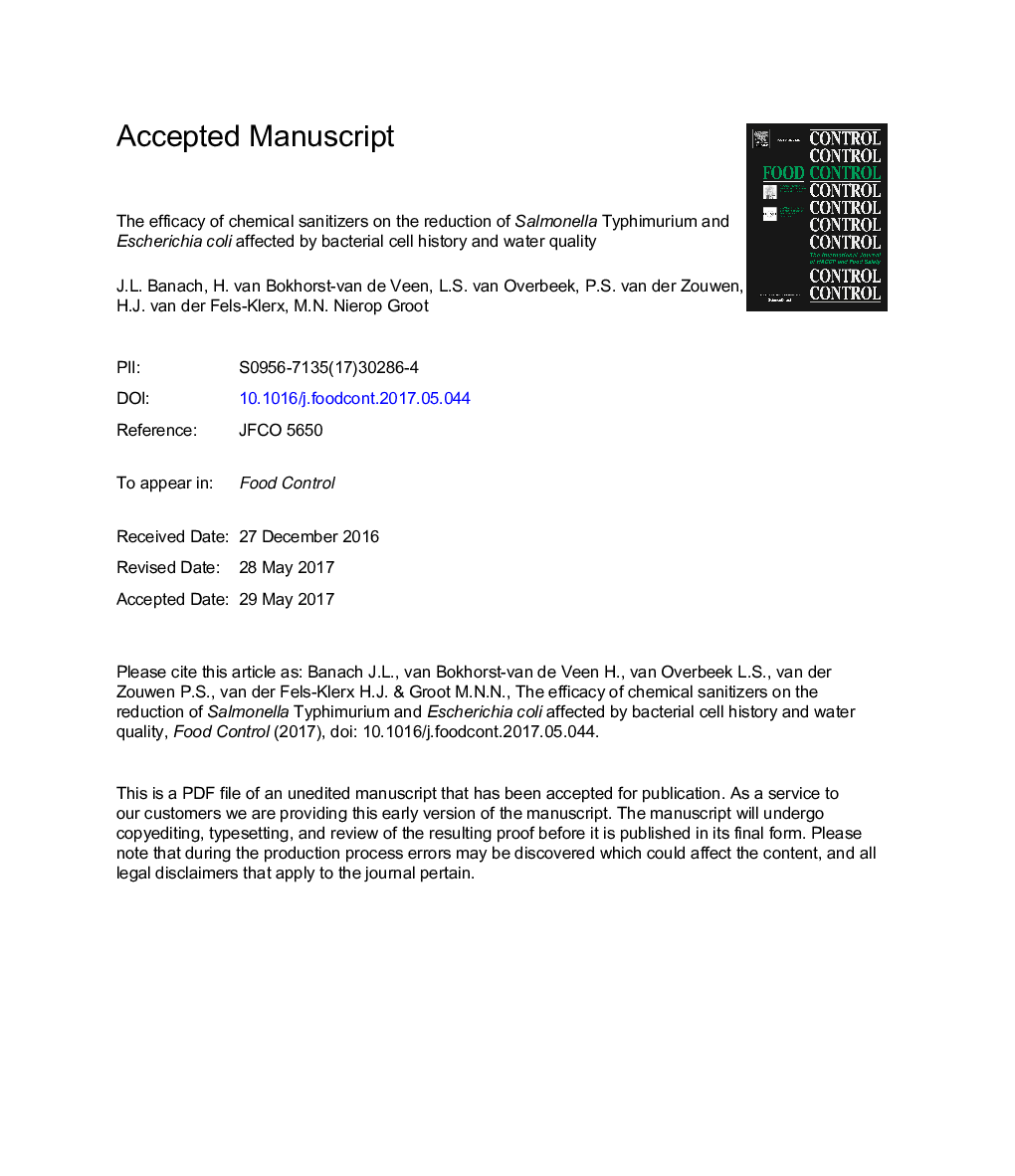| Article ID | Journal | Published Year | Pages | File Type |
|---|---|---|---|---|
| 5767189 | Food Control | 2017 | 39 Pages |
Abstract
Washing fresh produce with potable water helps to remove microorganisms, providing about a 1- to 2-log reduction, but this process can also pose an opportunity for cross-contamination of bacteria in the washing tank. The objective of this study was to evaluate the efficacy of three chemical sanitizers, sodium hypochlorite, chlorine dioxide, and a silver-copper solution on the reduction of S. Typhimurium and extended-spectrum beta-lactamase (ESBL) E. coli as well as to evaluate the impact bacterial cell history and water quality had on sanitizer efficacy. This was investigated with three scenarios representing different contamination routes and history of cells: (i) on starved and non-starved cells in potable water, (ii) on starved and non-starved cells in lettuce wash water and on lettuce leaf punches, and (iii) on non-starved cells in organically loaded process wash water (PWW). Sodium hypochlorite (NaClO) and chlorine dioxide (ClO2) were more effective in preventing cross-contamination in the potable water than the silver-copper solution. Starved and non-starved bacterial cells displayed minor differences in their susceptibility to sanitizing agents in the (i) potable water and (ii) lettuce wash water demonstrating that other conditions greater influenced sanitizer efficacy. Particularly, the organic load of the water, wash water temperature, and pathogen attachment and release from the produce were shown to affect a sanitizer's efficacy during washing. Furthermore, results emphasize that chemical sanitizer use should focus more on wash water disinfection, rather than produce decontamination, to prevent pathogenic cross-contamination during processing. Future research should investigate the feasibility of ClO2 application during pilot-scale processing.
Keywords
Related Topics
Life Sciences
Agricultural and Biological Sciences
Food Science
Authors
J.L. Banach, H. van Bokhorst-van de Veen, L.S. van Overbeek, P.S. van der Zouwen, H.J. van der Fels-Klerx, M.N. Nierop Groot,
